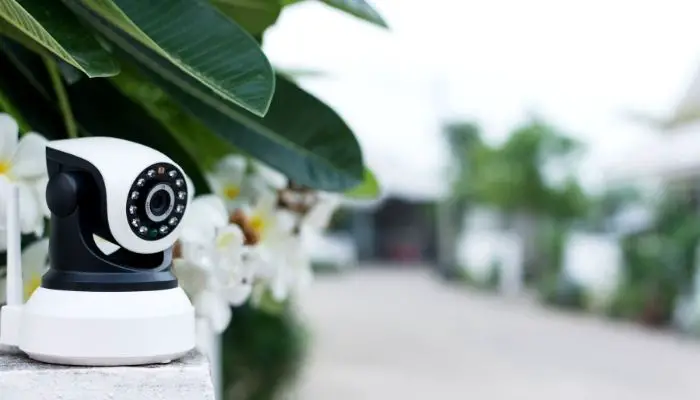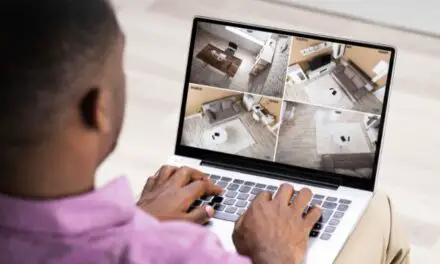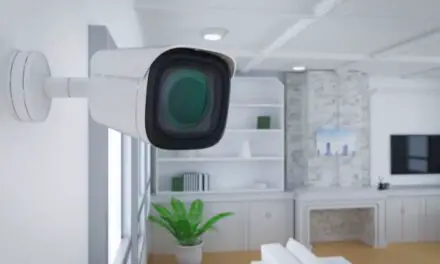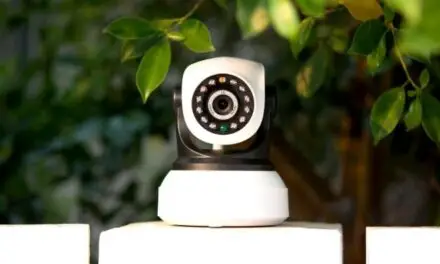You can have a home security system without the internet if you use security cameras that aren’t cloud-enabled and will work offline.
You can configure DVR/NVR camera systems to store recordings on an SD card in the camera or have the videos uploaded locally to a Network-attached storage device (NAS) without the need to be connected to the internet.
Cameras from brands like Lorex and Swann can be set up as CCTV cameras to utilize a local DVR, without the need for an internet connection.
You can build a home security system without the need for it to be online, but there may be more steps involved and it might be more difficult to get up and running.
There are a lot of benefits, however, and it may be worth the effort for the local storage alone.
Nowadays, everything is done with wireless and smart applications in mind.
So much so that it’s often difficult to purchase equipment or operate without any internet use at all.
Installing a home security system without Bluetooth, Z-wave, WiFi, or any other wireless communication protocols is more and more difficult with every passing season, but not yet impossible.
Table of Contents
How To Set Up A Home Security System Without Internet

Even if you have no Internet or network of any type at your property, you can still set up a surveillance and monitoring system using wireless video cameras that don’t need an Internet connection.
All you’ll need is a wireless camera system that comes with an NVR (Network Video Recorder) and one or more WiFi security cameras.
You can buy a full setup that will enable you to do round-the-clock monitoring and recording without any need for the Internet.
The NVR and the cameras will connect to one another and communicate on their own proprietary network without the need for other equipment or the internet.
The last thing you’ll need is a computer monitor or HD TV to view the footage.
The fact is that security systems were installed for years, decades before WiFi and Bluetooth were even concepts.
Luckily, that’s still achievable and isn’t as difficult as you’d think.
There will be wireless communication, but it will only consist of sensors or cameras communicating with a control panel, rather than the cloud on some unnamed server.
To set up your system, you’ll need the following:
- An NVR.
- Gaming monitor or TV monitor to see the footage.
- WiFi Security Cameras.
- Motion, Window, and Door Sensors.
The NVR (Network Video Recorder) is responsible for wirelessly connecting to and recording the footage captured by your surveillance cameras.
The NVR connects directly to your monitor so you have 24/7 monitoring capabilities.
The best monitors are High Def ones.
None of that old cathode ray stuff.
Today’s security cameras generally record in high definition and require a platform capable of rendering their resolutions.
There are also plenty of options for motion, window, and door sensors that each contain their alarms, most that are over 120 decibels or higher.
They don’t have to be tied into a control panel if you don’t want them to.
Most of your motion, window, and door sensors are capable of wireless communication up to 1,000’.
You can use wired cameras with NVR if you want to, but keep in mind you’ll be running a lot of ethernet cable and HDMI cables.
If you have a security camera a good distance from the NVR, the cost of cables and aggravation go up.
You Might Also Like: How Far Can A Home Security Camera See? (All You Need To Know)
Benefits Of An Off-Grid Home Security System
The way home security systems, especially DIY systems, are manufactured today if the internet goes down, you essentially have a bunch of expensive paperweights hanging from your exterior and interior walls.
Off the grid, that’s no longer a concern.
You also don’t have to worry about the variety of subscription plans required just for the privilege of looking at a live view of the expensive cameras you just purchased.
Cloud services are always an issue as well.
Companies want your footage.
They pinky promise to keep it safe, but if they meant what they said, they would ensure you have the option of local storage.
Another benefit of local home security systems is that you can keep them running in the event of a power outage with the portable power supply of your choice.
You lose power with a modem and router, you lose internet, therefore you lose your system.
Drawbacks Of An Off The Grid System
You can’t do anything on the go.
You have to be with your system at all times to adequately monitor it.
You won’t receive motion, window, door, or security camera alerts from your phone.
Without being physically present, your home security system can’t notify you of potential problems.
You may need professional installation, especially if you decide to have an entirely wired system and it can get expensive as well.
Wired systems require a lot of cabling.
Can Wireless Security Cameras Work Without Internet?
Yes. Wireless security cameras can work quite easily without the internet.
They can operate on battery power alone and without the need for wires or the internet.
You’ll only need an internet connection if you want your footage to be saved online so you can access it remotely.
To avoid a need for the internet, you could choose to save footage on an SD card in the camera or save it locally to a network-attached storage device.
You can also use a cellular security camera, such as Reolink Go, to watch the video feed live from a remote location, without the need for an internet connection.
Can I Use A Home Security Camera Without Service?
Yes, you can buy a home security camera and use it to monitor your property without having to use a monitoring service.
One such company, SimpliSafe, offers affordable home security equipment packages and you can choose to forego their monitoring service and opt to self-Monitor for free.
This will allow you to access the basic features such as your cameras’ live feed from the SimpliSafe app, the system timeline that shows up to one week of history, control of the system from your phone, and the options to view and change the settings of your system and devices.
However, you will need an internet or cellular connection to access those features.
What Security Cameras Work Without Internet?
When looking for security cameras that work without the need for an internet connection there are a number of options available.
The Arlo Go Mobile Security Camera is one of the best choices and a good solution for when you don’t want to use the internet to get things set up.
Arlo Go supports 3G/4G LTE wireless connections so you can still monitor the live feed from your camera wherever you happen to be.
The ONE Link Wireless Battery Camera System is another solid option if you want to avoid using the internet.
These cameras are completely wireless and powered by a 5,500 capacity mAh rechargeable battery which can last up to 6 months when set to activate from motion detection only.
Can You Get A Security System That Doesn’t Need Internet Professionally Installed?
There are home security providers that will professionally install a system without the necessity of the internet, such as Brinkshome.
Having your system professionally installed does take a lot of the DIY options off of the table.
It also takes away a sense of choice with the type of devices you arm your house with.
If you prefer to choose your sensors, professional installation probably isn’t the best fit.
Regardless of the choices, you decide to go with, putting together a home security system without the internet is certainly an option, even with the glut of wireless products and devices in use today.
Whether you decide to have a wired or wireless system, you can do it without the internet and still maintain a superior level of protection for your home or business.



